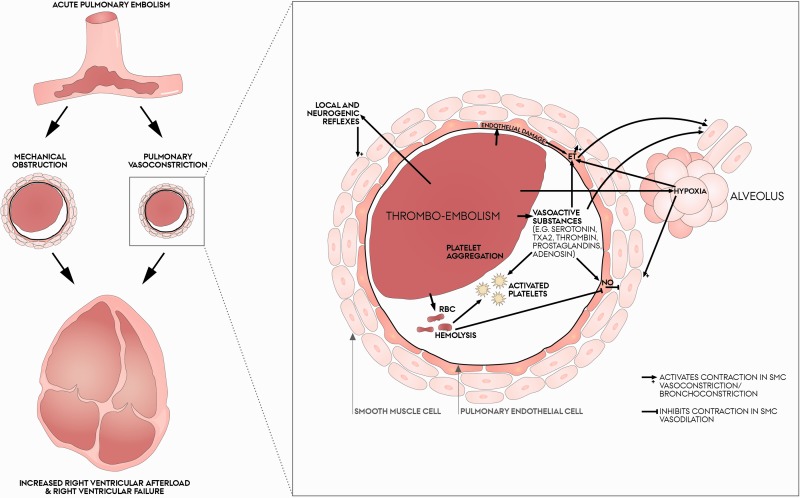Fig. 1.
On the left, a schematic pathway showing acute pulmonary embolism (PE) to cause both mechanical obstruction of pulmonary arteries and pulmonary vasoconstriction. Both increases right ventricular (RV) afterload causing acute RV dilatation and interventricular septal shift which have been associated specifically with severe, acute PE. The RV may enter a vicious circle of right ventricular failure, circulatory collapse and death. On the right, focus on pulmonary vasoconstriction induced by a pulmonary embolism. Several mechanisms are potential underlying causes: vasoactive substances from the thrombus, hemolysis, activated platelets, endothelial damage, reflexes, and hypoxia. Please see the text for further details.
ET: endothelins; NO: nitric oxide; PEC: pulmonary endothelial cell; RBC: red blood cell; SMC: smooth muscle cell; TXA2: thromboxane A2.

